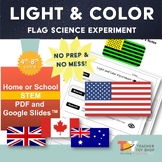10 results
Physics graphic organizers for Easel
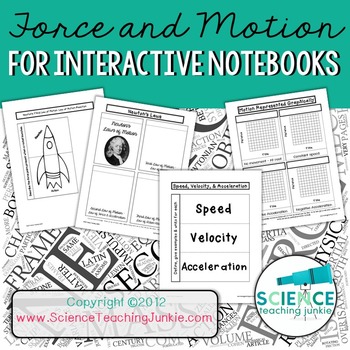
Force and Motion for Interactive Science Notebook (Distance Learning & Google)
Now you can add an interactive layer to this PDF and assign it to your students through Google Classroom!This PDF includes 53 pages of various foldables, flippables, and activities specifically designed for an Interactive Science Notebook to be used during a unit on Force and Motion. (23 of these pages are teacher answer keys, examples, and directions for use)Most foldables and flippables are left blank on the inside. This will allow you to fully customize each one for whatever curriculum or gr
Subjects:
Grades:
4th - 10th
Also included in: Custom Bundle for Elizabeth V.
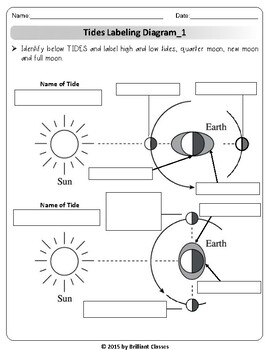
OCEAN WAVES AND TIDES: Review/Research Worksheets| Digital Distance Learning
OCEAN WAVES AND TIDES WORKSHEETS:These worksheets are enabled with Easel Activity Tool to use by your students for device-based learning along with Printable Version. So directly you can assign this activity to your students as a part of the Digital Distance Learning.This is a great supplement for students to review/assess and strengthen their knowledge the unit of OCEAN CURRENTS, WAVES AND TIDES. Answer key included.It includes total THREE worksheets/graphic organizers. This worksheets can also
Subjects:
Grades:
6th - 9th
Also included in: Cycles In Space Worksheets / Graphic Organizers Bundle
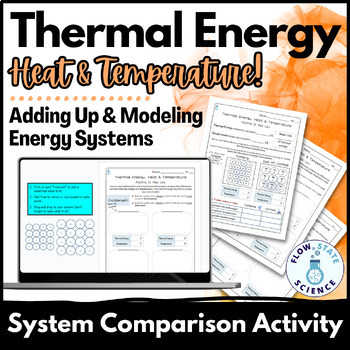
Thermal Energy Heat and Temperature | Adding and Modeling Systems | Interactive
Students use mathematical and computational thinking with these digital interactive, printable worksheets to learn the difference between thermal energy, heat, and temperature! Students mathematically compare the differences between total kinetic energy (thermal energy) and average kinetic energy (temperature) by using and developing models of energy systems. By the end of this lesson, students will be able to answer the question, "What is the difference between thermal energy, heat and temperat
Subjects:
Grades:
6th - 9th
NGSS:
MS-PS3-4
, HS-PS3-1
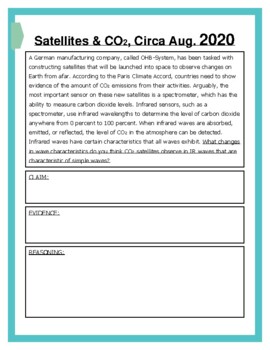
Wave Properties #2 Science CER Reading/Writing Prompt
As current science teaching practices and ELA teaching practices continue to evolve, teachers are encouraged to incorporate more nonfiction text into classroom practice. This short nonfiction text is based on current news.This CER document provides a vehicle for nonfiction text reading analyzed through the lens of Claims, Evidence, and Reasoning. We want our students reading more science and constructing arguments in a scientific manner. This text can be used as a bell ringer, included in a sub
Subjects:
Grades:
6th - 12th
CCSS:
NGSS:
MS-PS4-1

Thermal Energy Transfer | Graphic Organizer & Card Sort | Digital & Printable
Students analyze types of thermal energy transfer by comparing convection, conduction & radiation! There are multiple formats for differentiation-- guided, with sentence stems, answer card sort (digital and printable), or a blank organizer to fill in the heat transfer type, where it occurs, within what medium, and why it occurs. Perfect to supplement your heat transfer lesson by really breaking down the concepts. This science resource includes an answer key, is editable, and is both print &a
Subjects:
Grades:
7th - 10th
NGSS:
MS-PS3-4
, HS-PS3-4
, HS-PS3-2
Also included in: Secondary Physical Science | THERMAL ENERGY | STORE RESOURCE BUNDLE
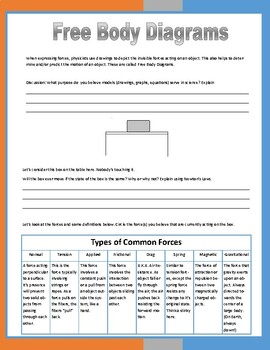
Master Physics: Intro to Free Body Diagrams (Inquiry Based Guide + Ppt + Easel)
Teaching Free Body Diagrams? Use this inquiry based guide to allow students to discover how to draw and interpret Free Body Diagrams and how they relate to Newton's Laws. Students will start with an example that will gradually release students from a guided approach to a free inquiry approach. This resource is best used as a guided inquiry teaching tool.Students will eventually be able to:Draw Free Body DiagramsDescribe Balanced vs. Unbalanced ForcesRelate Free Body Diagrams to Newton's LawsWhy
Grades:
8th - 12th
NGSS:
HS-PS2-1
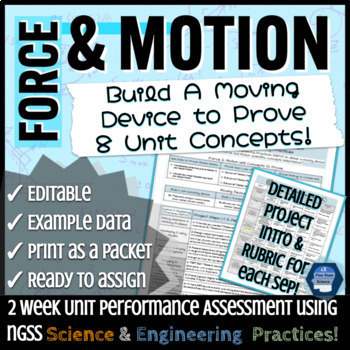
Force & Motion | NGSS Performance Assessment | Prove 8 Scientific Principles
Students use NGSS Science and Engineering Practices to demonstrate 8 major Force & Motion unit scientific principles in a step-by-step process. Major concepts addressed are Newton's 3 laws, kinematics, kinetic / potential energy and finally the law of conservation. This resource is editable so you can modify to your classroom! The pages are set up as easy to use graphic organizers with added instructions and examples to methodically scaffold students through each step in the project. A very
Subjects:
Grades:
6th - 9th
NGSS:
MS-ETS1-4
, HS-PS2-2
, MS-PS2-2
, HS-PS2-1
, MS-ETS1-3
Also included in: Secondary Physical Science | Forces and Motion | STORE RESOURCE BUNDLE
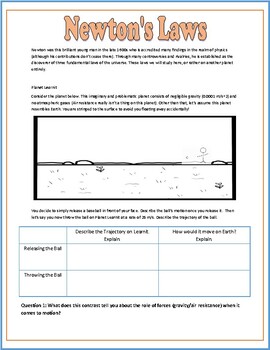
Newton's Laws Introduction (Inquiry Based Guide + Ppt) + Easel Activity
Teaching Newton's Laws. Use this inquiry based guide to help students ask the right questions! This guide uses a fictional planet for students that helps students release the fear of "being wrong". Students will compare the motion of objects on the fictional planet to the motion on Earth as a means of "discovering" Newton's Laws of Motion. Students will then be granted a scenario that they must explain using the 3 Laws of Motion.Why Inquiry?Telling students what's right skips over the process wh
Grades:
7th - 12th

Newton's Laws - Simple Graphic Organizer
This is a simple graphic organizer (especially made for my ICT class). The kids will fill in the empty space with their notes, their definitions and any supplemental visuals they think will help them. We always build off of simple graphic organizers... :)
Subjects:
Grades:
6th - 8th
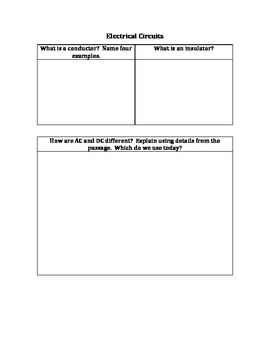
Electrical Circuits Graphic Organizer
This graphic organizer allows students to take notes on electrical circuits. Students collect information on conductors, insulators, AC and DC.
Subjects:
Grades:
4th - 8th
Types:
NGSS:
4-PS3-2
Showing 1-10 of 10 results




